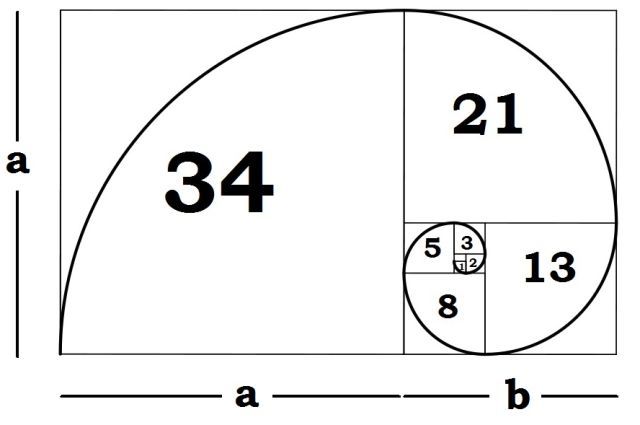如何在你的照片构图中使用斐波那契螺旋线?

Table of contents
摄影从构图开始。 如何构图是拍摄好照片的基本基础,有一种构图技巧一直很关键,那就是黄金比例。 在这篇文章中,我将解释什么是黄金比例,以及如何利用它来立即改善你的照片。
什么是黄金比例?
假设你有一条线,有一条数学规则说,任何线都可以被分割,使最长的线段除以最短的线段,与整条线除以最长的线段的比例相同。
说得形象一点:

线的长度是x+y,第一段是x,第二段是y: x/y=(x+y)/x=1.6180339887498948420
这个神奇的比例变成了1,618 在数学界,这个特殊的数字被称为Phi。 但它与摄影有什么关系呢?
在图像构图方面,你可以用这个比例来决定如何划分你的画面。 不要把你的主体放在中间;相反,以地平线为指导,把你的主体放在1.618点。 一开始有点难以理解,但我们会更详细地探讨这个问题,所以如果你现在感到迷茫,不要绝望。
什么是Phi网格?
许多摄影师在构图时喜欢使用基于Phi的网格。 自然,这种技术被称为 皮格 这是三分法则的一种变体,是摄影的基本原则之一。
三分法将一张图片分为大小相等的三行和三列,结果是垂直方向为1:1:1,水平方向为1:1;Phi网格以类似的方式划分图片,但根据黄金比例减少中间的行和列,结果是垂直方向为1:1618:1,水平方向为1:1618:1。
See_also: 日期是如何记录在模拟照片上的这里有一个快速的比较:

网格线的交叉点是眼睛自然被吸引到的地方,所以用它们来对齐你的图像。
斐波那契螺旋线
在几何学中,黄金比例也可以表示为一种特殊类型的矩形。 假设你把上面的x+y线,旋转成一个矩形,其中宽度为x,长度为x+y。
如果你把这个长方形的面积分成一系列的正方形,就会形成斐波那契数列的螺旋状:

如果你读过 达芬奇密码 你知道斐波那契数列:你从数字1开始,加上之前的整数,以这种模式组成一个无尽的数字系列。 所以这个系列看起来像这样:
1, 1, 2, 3, 5, 8, 13, 21, 34, 55, 89...
斐波纳契发现,这种 "黄金螺旋 "出现在自然界的许多地方,从DNA分子到花瓣,从飓风到银河。 更重要的是,斐波纳契螺旋对人的眼睛来说是赏心悦目的。 长话短说,我们的大脑需要处理我们眼睛看到的一切。 它越能快速处理的东西,越是赏心悦目。黄金比例在大脑中的处理速度更快,所以它发出的信号是这个图像具有美感。
See_also: 黛安-阿巴斯,代表的摄影师如何使用斐波那契螺旋线
就真正的摄影而言,你不需要担心技术上的解释。 斐波那契螺旋线几乎对任何种类的摄影都有用,但对风景摄影、自然摄影、街头摄影和户外随笔尤其好。
Apogee Photo有一个关于如何使用它的很好的例子:
 那是一个秋末有雾的下午,我想拍下夕阳透过雾气的颜色,以及秋叶美丽的深红色。 我的目的是把一个人站在外面沿着小路走,前景的秋叶和树线作为我取景的中心点。 为了使所以我把这些方面放在我想象的长方形的中心,知道它包含了与这种关系有关的几个关键焦点,并把雾气沿着螺旋的宽弧线纳入场景。
那是一个秋末有雾的下午,我想拍下夕阳透过雾气的颜色,以及秋叶美丽的深红色。 我的目的是把一个人站在外面沿着小路走,前景的秋叶和树线作为我取景的中心点。 为了使所以我把这些方面放在我想象的长方形的中心,知道它包含了与这种关系有关的几个关键焦点,并把雾气沿着螺旋的宽弧线纳入场景。 正如你所看到的,螺旋形基本上有一种引导你的眼睛自然地从焦点到外面的方式。 原文:Mihir Patkar,来自 www.makeuseof.com

